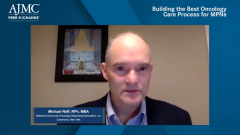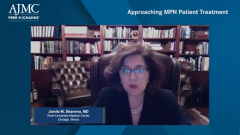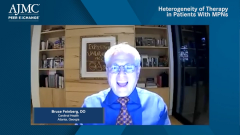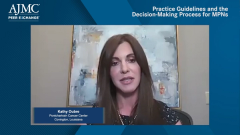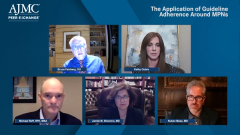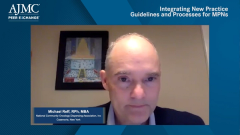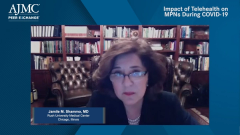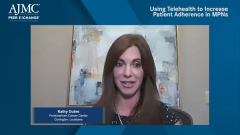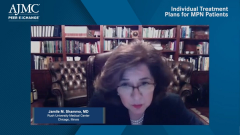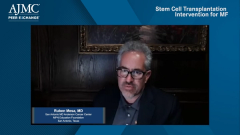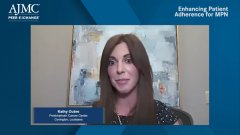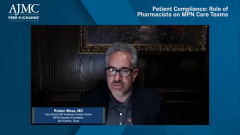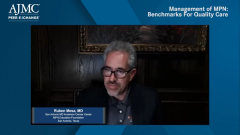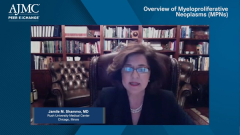
Approaching MPN Patient Treatment
Jamile Shammo, MD, reviews methods for approaching patient treatment of MPNs and how it differs for each patient and symptom.
Episodes in this series

Bruce Feinberg, DO: Ruben gave us a sense of the consolation as these patients show up, but I want to get a sense of that journey for the patient. How many of them are going to be in a watchful waiting mode? How many of them are going to be on treatment? When do those treatments start to evolve into some of the newer drugs? Is that changing based on our understanding of the molecular underpinnings? If we know these driver mutations, how early would that possibly be used if we know that that is at the root? Give me a sense of the patient journey and how different that patient journey is whether it is ET [essential thrombocythemia], PV [polycythemia vera], or MF [myelofibrosis].
Jamile M. Shammo, MD: That is extremely patient dependent and disease dependent. If you started with a patient with PV, for example, you first must characterize the disease. We begin with something called risk stratification. For every patient who has polycythemia, once you make the diagnosis, there are certain parameters you would like to achieve, like hematocrit below 45%. I suppose that we could talk about this later when it comes to count optimization, but you would like to begin with phlebotomy and put patients on low-dose aspirin, for example. You are already in an active treatment mode for pretty much everybody.
If they then happen to be with high-risk disease, then you are starting to think about utilizing cytoreductive therapy, meaning hydroxyurea or some form of interferon, which are the more common treatments that are utilized in patients who have PV. You are already in an active treatment mode, so that is how I approach patients who have PV. Along the way, you are monitoring them for disease progression to myelofibrosis and thinking about how to address their symptoms, quality of life, and things of that nature. This is PV in a nutshell.
For patients who have ET, this is again highly dependent on the platelet count, the symptoms, the risk of bleeding or clotting, and the type of driver mutation. If I have someone who has a CALR mutation, for example, and the platelet counts are not elevated and they do not have high risk, then I may elect not to treat them accordingly with cytoreductive therapy. I may even elect to not put them on aspirin. Each patient would have to be dealt with in an entirely different manner deepening on their risk stratification and their blood counts.
As Ruben alluded to, if you have a patient with MF who is completely asymptomatic, I may choose to monitor them if they happen to not be transition dependent and if they do not have constitutional symptoms or weight loss. I might follow them for some time to get an idea about the pace of their disease. At some point, everybody who has primary myelofibrosis will require a form of therapy. How long do you have to monitor somebody who may be asymptomatic for a while, and how do you assess their symptoms? Those are the million-dollar questions. How detailed are we before we say that someone is totally asymptomatic? That is another question. This is what we need to do when we are meeting someone for the first time and when we are thinking about how we take care of their disease moving forward.
Transcript edited for clarity.
Newsletter
Stay ahead of policy, cost, and value—subscribe to AJMC for expert insights at the intersection of clinical care and health economics.


